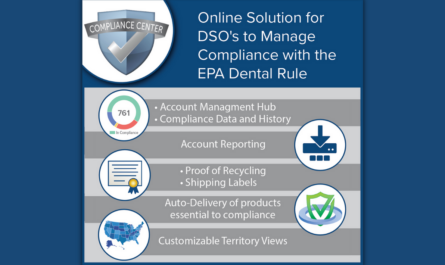The importance of implementing, and maintaining, treatment protocols
By Andrea Kowalczyk, RDH BS, Senior Performance Coach, Enhanced Hygiene
In most businesses, there are policies and procedures in place for almost every action that takes place on the premises — the hours of operation, dress code, phone etiquette, compliance manuals, etc. Policies and procedures are required to ensure the business runs legally, efficiently and profitably.
The dental practice is no exception. Every dental office is ripe with protocols both broad and narrow, ranging from what insurance plans, if any, are accepted, to how to sterilize the bur blocks.
Most practices have set protocols in place for team members such as business staff and assistants to follow. What are often sidestepped are guidelines for the providers to follow concerning treatment decisions. I call them “Treatment Protocols,” and like any other protocol, treatment protocols ensure practices operate according to standards. Having standards is about not tolerating mediocrity. Group practices want to ensure that every patient that walks in the door is treated with the same excellent level of care, regardless of which team member happens to be providing the care.
Benefits of protocol
Examples of treatment protocols are: what assessments to complete for each patient (perio charting, oral cancer screening), how to sequence visits for periodontal treatment, and which products are offered for prevention when a patient is at risk of decay. There are immediate benefits to having clinical protocols, and as practices grow, they often find themselves needing standards sooner rather than later. Some of the best reasons to have clinical protocols are as follows:
- Maintains a consistency of care, so patients get the best treatment, based on the best evidence, every time, with every provider
- Provides a road map that serves as a guide for newer providers and employees with clinical diagnosis and treatment planning decisions
- Ensures that seasoned providers are employing the latest techniques and do not become complacent
- Fosters pride in the providers’ work; most folks work better with a little structure
- Allows the practice leadership to hold team members accountable to certain standards of care when reviewing the provider’s performance
When you begin talking about putting protocols for treatment in place, you sometimes hit a nerve with providers. You have waded into the murky water of professional judgment and clinical discretion. You may wonder if clinician discretion and treatment protocols can coexist. The answer is unequivocally yes, they can, if the protocols are developed properly to begin with.
Finding the perfect balance
How do dental office leaders best walk that line and find the perfect balance of high standards mixed with provider autonomy?
Don’t overload on regulations. First, you don’t want so much regulation that folks get bogged down, and cannot think on their feet, or have autonomy in decision making. All team members, regardless of their position, should know they are free to use their best judgment when necessary. There is a fine line between having nimble, empowered team members, and allowing providers to answer only to themselves.
Get buy-in. Allow providers to give their input into the protocol before rolling it out. Do not give them veto power (the protocol change is not negotiable) but do encourage them to assist in its development. Compliance will be much better when they have a say. For example: “Julie Hygienist, we will be offering fluoride varnish to our patients starting next month. Would you and Dr. Smith get together and research some good brands for us to try?” And: “Dr. Jones, would you team up with Dr. Johnson and review these three examples of periodontal protocols and pick the one you both like best?”
Give teams the clinical “Whys.” Some team members may think your office is now offering fluoride strictly as a revenue generator, when in fact the purpose of fluoride is to prevent the need for costly restorations! Ensure you have valid clinical reasons for the treatment protocols, and that providers are given peer reviewed studies and education on new therapies. Encourage questions.
Stay out of the weeds. Guidelines should read: “We will use Arestin as part our periodontal therapy,” vs. “We will place Arestin in any site over 5mm with bleeding, but not in sites with bony defects, defective restorations or residual calculus.” Leaving out the minutia minimizes confusion.
Keep it simple. Focus on three or four clinical standards. Too much will result in information overload.
Evidence based. Protocols should be evidence based, and leaders should be ready to answer questions about the science behind the new therapies. Utilize product reps as an adjunct to the education you provide to clinicians, not as the sole source. Avoid anything that feels like a sales pitch.
Provide some wiggle room. Providers should know that they can amend the protocol if the patient’s unique situation absolutely warrants it; without reprimands. Unless it becomes a pattern, the occasional break with protocol should be allowable.
Go with the flow. Ensure protocols are reviewed, revised, and updated as research changes. Clinical protocols should be a living, and evolving set of standards.
Hold them accountable. Systems should be in place to review how the providers are performing the clinical protocols. Use provider procedure reports to share with providers and coach them to improve as necessary. Ensure whoever is reviewing the information can competently discuss questions regarding clinical treatment.
Write it down. This one speaks for itself. List the protocols in a manual and give each provider a copy. I am not a fan of having providers sign that they have been told about clinical protocol changes. It sets a negative, almost punitive tone. You want providers to be excited and onboard!
Implementing Treatment Protocols can be a bit of a slippery slope, so it pays to take your time, and perhaps consult an expert on clinical protocol change and implementation. It may not always be easy, but it can be done! Having high clinical standards and allowing providers to have autonomy and professional pride can mix beautifully.





Thanks Andrea! This article is fantastic. Thank you for you insight. Peg